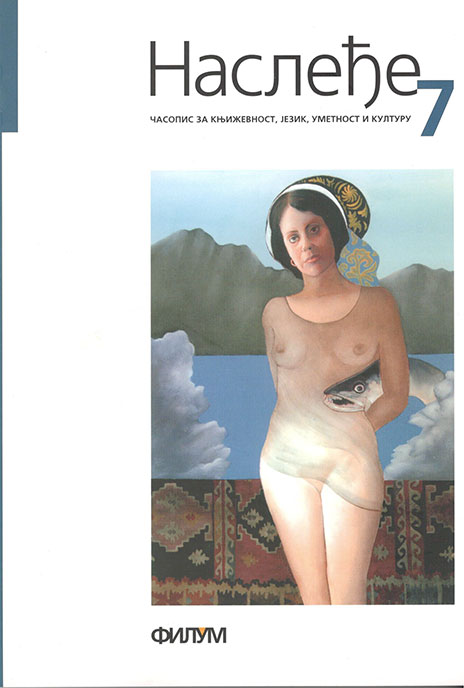THE RELATION BETWEEN KARAS’ PORTRAITS IN THE NOVEL OMER-PASHA LATAS BY IVO ANDRIĆ AND THE UMBERTO ECO’S THEORY OF THE „OPEN WORK“
Keywords:
отвореност значења, амбигвитет, коауторство, јединство супротностиAbstract
What is being examined in this work is the openness of meanining in the novel named Omer-pasha Latas by Ivo Andrić, paricularly in the motifs of Karas’ art. According to the views of Eco and Andrić, art is universal, and what differentiate one kind of art from another are only the means of expression. In this syncretism, an artist and interpretator become associates in the realisation of the intentio operis principle (which entails the tendency of the work itself towards the universum of meanings). The drama of the creation of an open work is showing through the portraits and sketches of Karas.
References
Иво Андрић: Омер-паша Латас, Сабрана дела Иве Андрића, књ. XV, Просвета, Београд, 1981, 325.
Johan Dewey, Arte come esperienza, Firenza, La Nuova Italia, 1951.;
T. G. Ogden, I. A. Richard, The meaning of meaning, London, 1923.
Johan Dewey, Arte come esperienza, Firenza, La Nuova Italia, 1951.;
T. G. Ogden, I. A. Richard, The meaning of meaning, London, 1923.
Downloads
Published
10-31-2007
How to Cite
Живковић, Д. Р. (2007). THE RELATION BETWEEN KARAS’ PORTRAITS IN THE NOVEL OMER-PASHA LATAS BY IVO ANDRIĆ AND THE UMBERTO ECO’S THEORY OF THE „OPEN WORK“. Nasleđe, 4(7), 79–94. Retrieved from http://35.189.211.7/index.php/nasledje/article/view/91
Issue
Section
Articles






